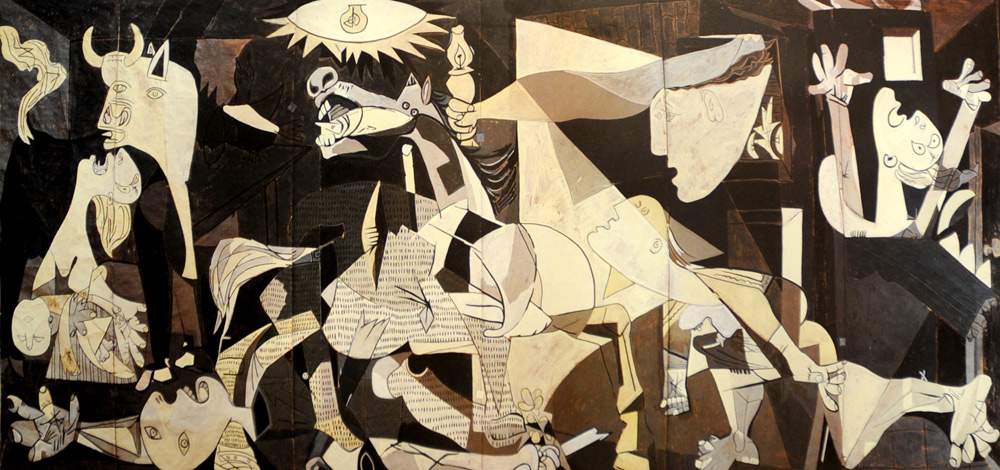Picasso, the cartoon of Guernica at the Museo Magi '900
The exhibition Guernica icon of peace, dedicated to the cartoon depicting Guernica, the very famous masterpiece by Pablo Picasso (Malaga, 1881 - Mougins, 1973) and from which was born, in 1955, the tapestry now on display at the entrance to the UN Security Council Hall, opened at the Museo Magi ’900 in Pieve di Cento (Bologna). The undertaking, according to reconstructions by art historian and exhibition curator Serena Baccaglini, came about thanks to the collaboration between Picasso, patron Nelson Rockefeller and artist Jacqueline de la Baume Dürrbach (a French artist capable of “weaving a painting”), to whom the tapestry is owed. The Guernica from which it all started is the celebrated one made in 1937 following the infamous aerial bombing of the Basque town of Guernica at the hands of the German Air Force, and today preserved at the Reina Sofía Museum in Madrid.
Nelson Rockefeller, after noticing Jacqueline de la Baume Dürrbauch’s talent, purchased the tapestry and preserved it: documents attesting to the relationship between the patron and the two artists are preserved at theRockefeller Archives in New York. “From the archives,” reads the exhibition presentation, “documents emerge that inform on the technical methods chosen to create the work, which was done under the supervision and direction of Picasso, who personally chose the eleven chromatic tones used for the tapestry, making it different in this respect from the painting, created in black and white to evoke the images reported in the monochrome photos of Paris newspapers. The artist’s satisfaction with this first experience then fostered the creation of a unique collection, in which twenty-six works by the Spanish artist were transformed into tapestries ’in order to be able to bring beauty to the people,’ according to the expression used by Rockefeller to describe the project.” Picasso, in fact, continued to collaborate with Dürrbauch following the making of Guernica.
In 1985, six years after Rockefeller’s death, his wife Happy decided to donate the tapestry to the United Nations so that the work’s message would guide those who find themselves making important decisions for world peace. The cartoon, on the other hand, which remained the property of the Dürrbauch family, was exhibited in Prague between 2011 and 2012, then in São Paulo, Brazil, in 2014, and in Wroclaw, Poland, in the same year. Magi ’900’s, on the other hand, is the first Italian exhibition.
The exhibition runs until Feb. 28 and can be visited during the opening hours of the Magi ’900 Museum, that is, Tuesday through Sunday from 10 a.m. to 6 p.m. (Mondays are closed). Tickets: full one exhibition 7 euros, full two exhibitions 10 euros, cumulative exhibitions + permanent collection 15 euros. The respective reductions: 5, 7 and 10 euros (for over 65, under 18, students with University card, teachers, Card Musei Metropolitani Bologna). Reduced groups of at least 10 people: 5, 5 and 7 euros. Free for children under 10, journalists, tour guides, chaperones of organized groups, teachers with school groups, Icom members. Information can be found on the museum’s website.
Pictured: the cartoon of Guernica by Pablo Picasso.
 |
| Picasso, the cartoon of Guernica at the Museo Magi '900 |
Warning: the translation into English of the original Italian article was created using automatic tools. We undertake to review all articles, but we do not guarantee the total absence of inaccuracies in the translation due to the program. You can find the original by clicking on the ITA button. If you find any mistake,please contact us.



























